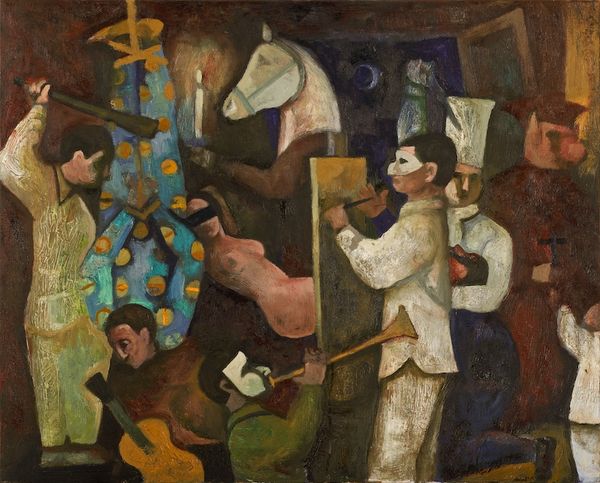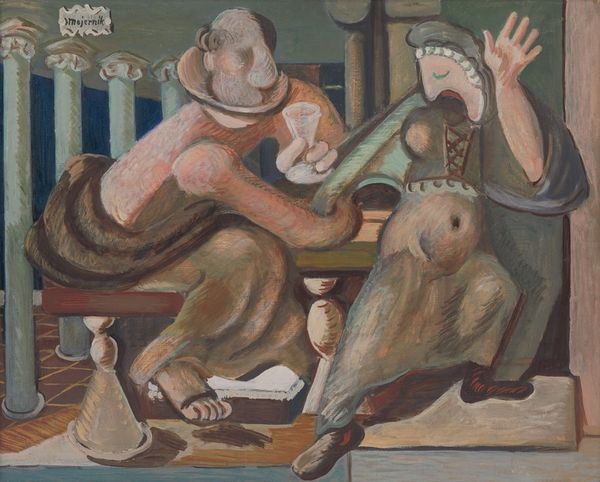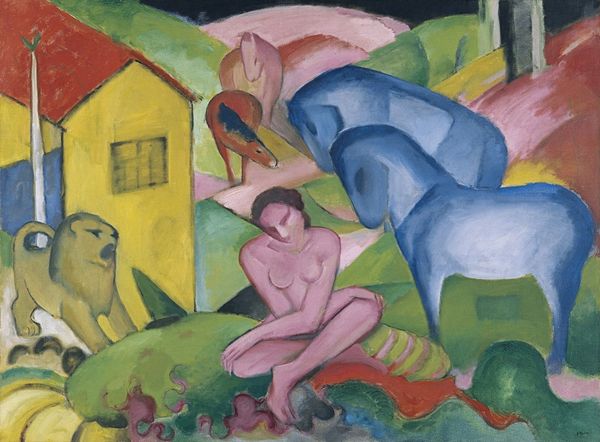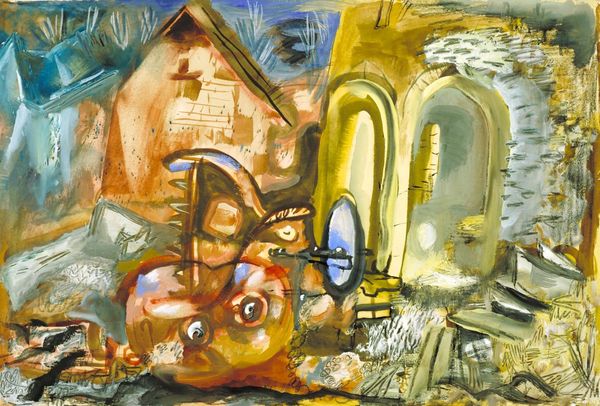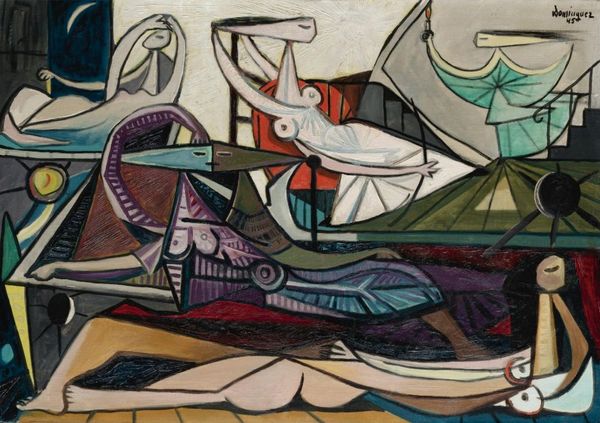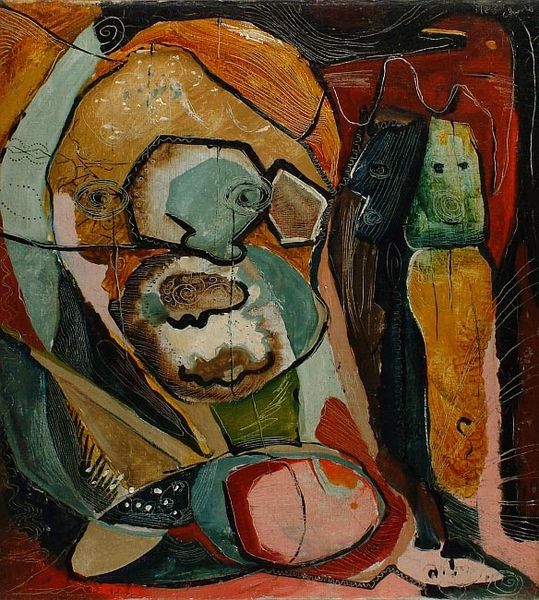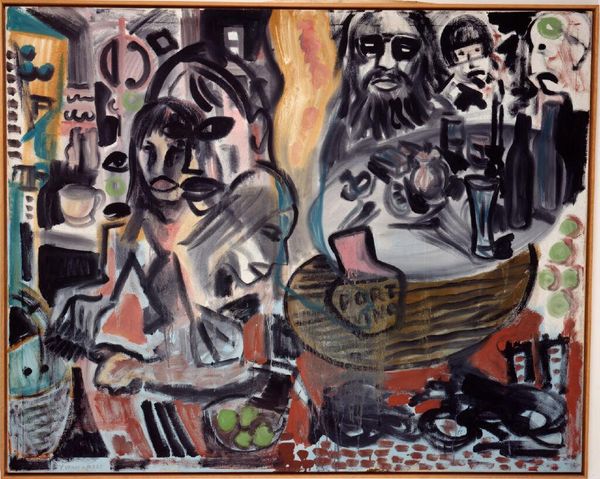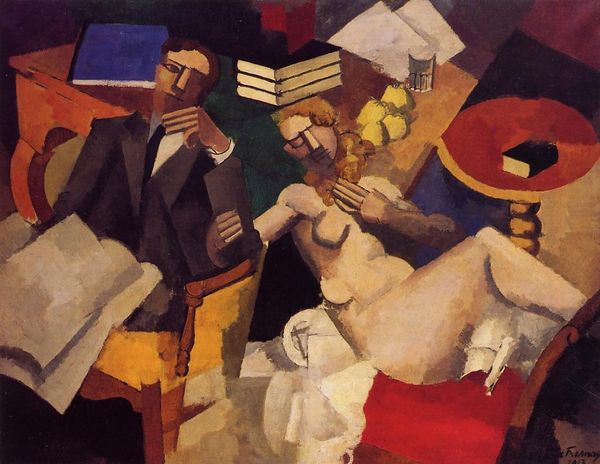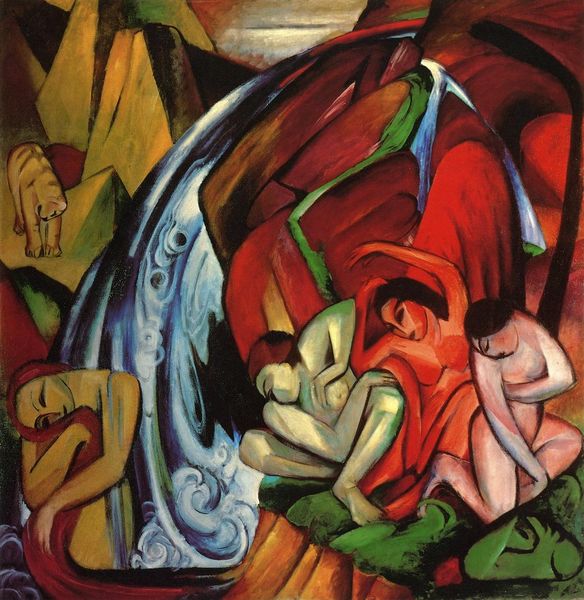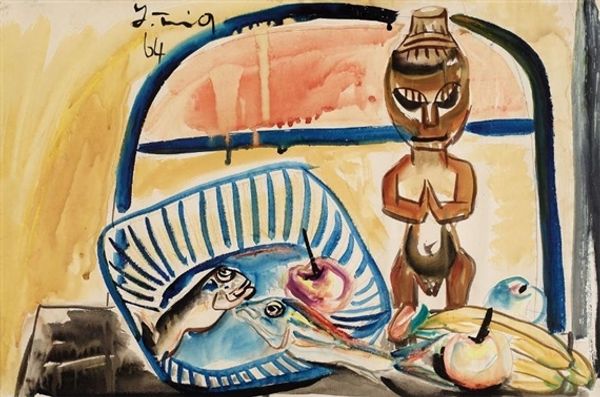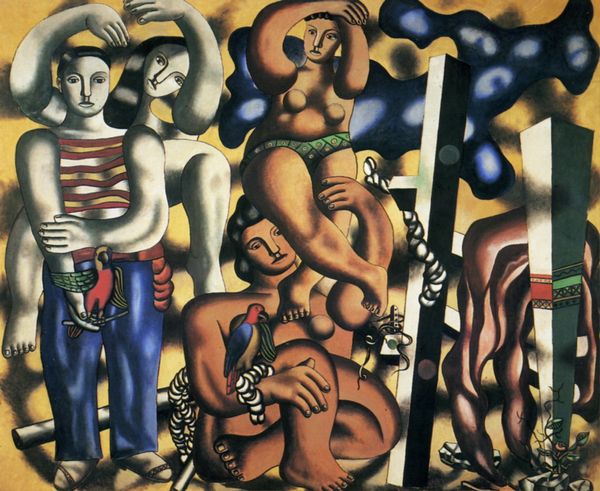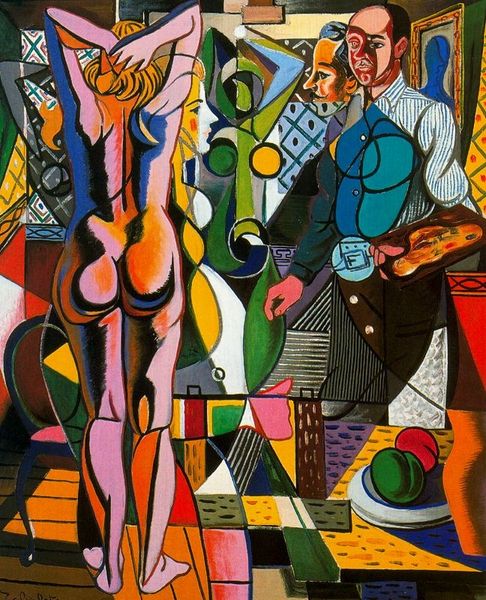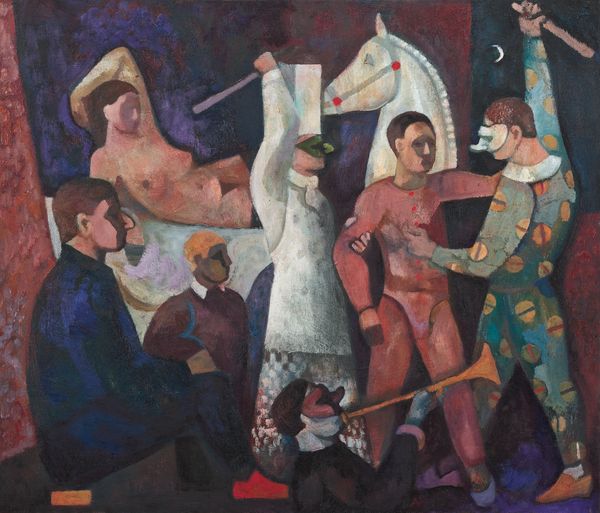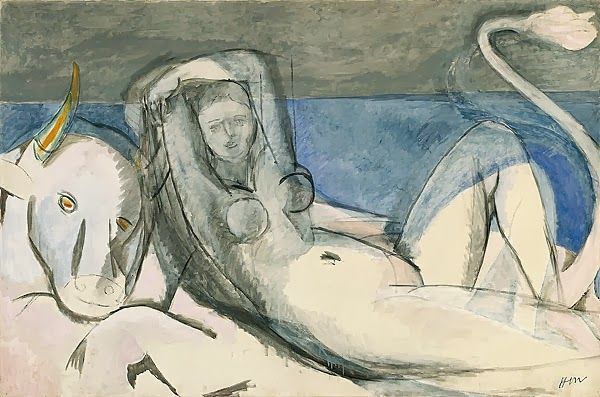
painting, oil-paint
#
portrait
#
cubism
#
painting
#
oil-paint
#
figuration
#
modernism
Copyright: Sandor Bortnyik,Fair Use
Sandor Bortnyik's work, "Ember Művei, Picasso" presents a tableau rich with cubist distortion, echoing Picasso's influence, yet forging its own symbolic path. The horse, a motif recurring throughout art history, from the steeds of ancient Greek sculptures to the tormented Guernica, appears here, not as a symbol of nobility, but perhaps of primal instinct, or even impending chaos. The reclining nude, a classical theme, is rendered with distorted anatomy, an echo of the Venus figure. The figure embodies not idealized beauty but a raw, visceral experience, a psychological landscape of the self. Consider how gestures and postures echo across time. Think of the seated man, reminiscent of a sage or a philosopher, a contemplative figure found in countless works throughout history. These echoes are not mere coincidences; they are threads of cultural memory, patterns ingrained in our collective consciousness. Bortnyik has tapped into a powerful force engaging viewers on a deep, subconscious level. This tapestry of symbols is not linear, but cyclical; each motif resurfaces, evolves, and takes on new meanings in different historical contexts.
Comments
No comments
Be the first to comment and join the conversation on the ultimate creative platform.
